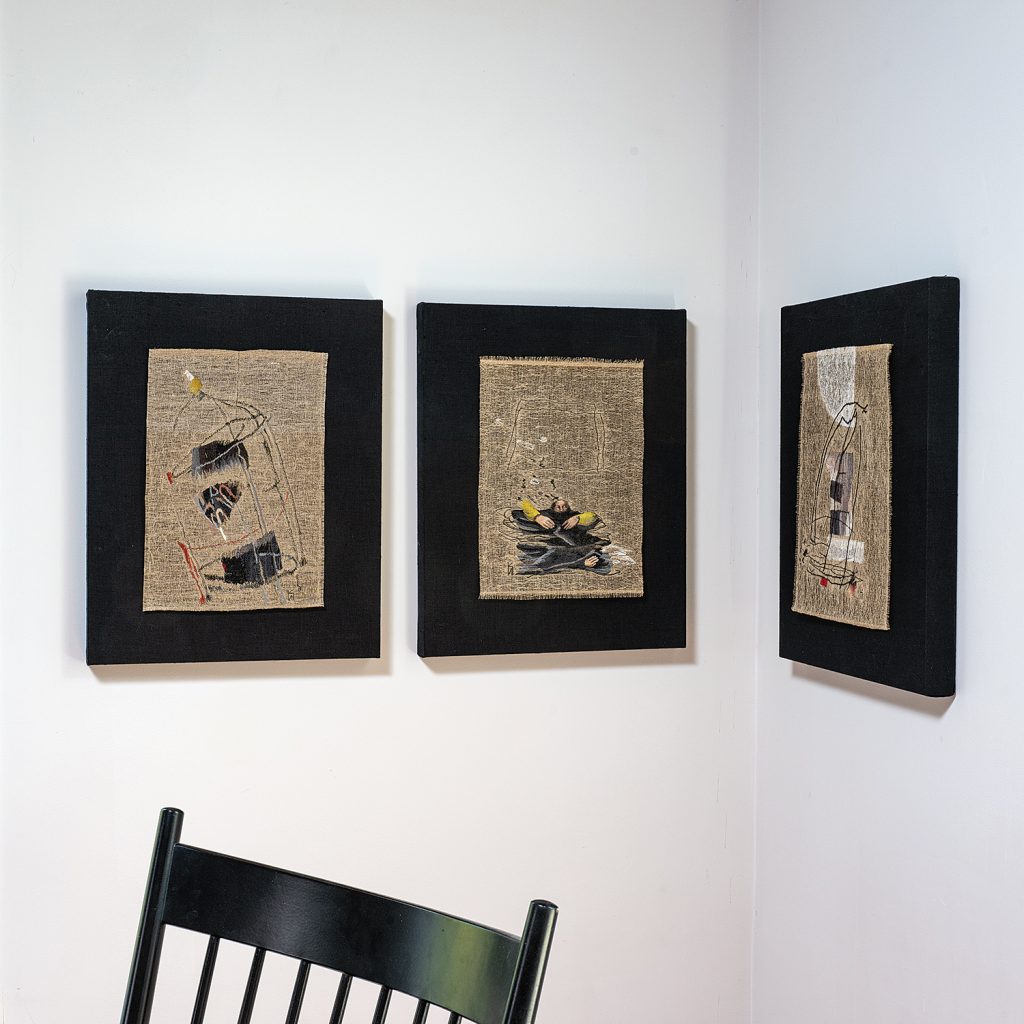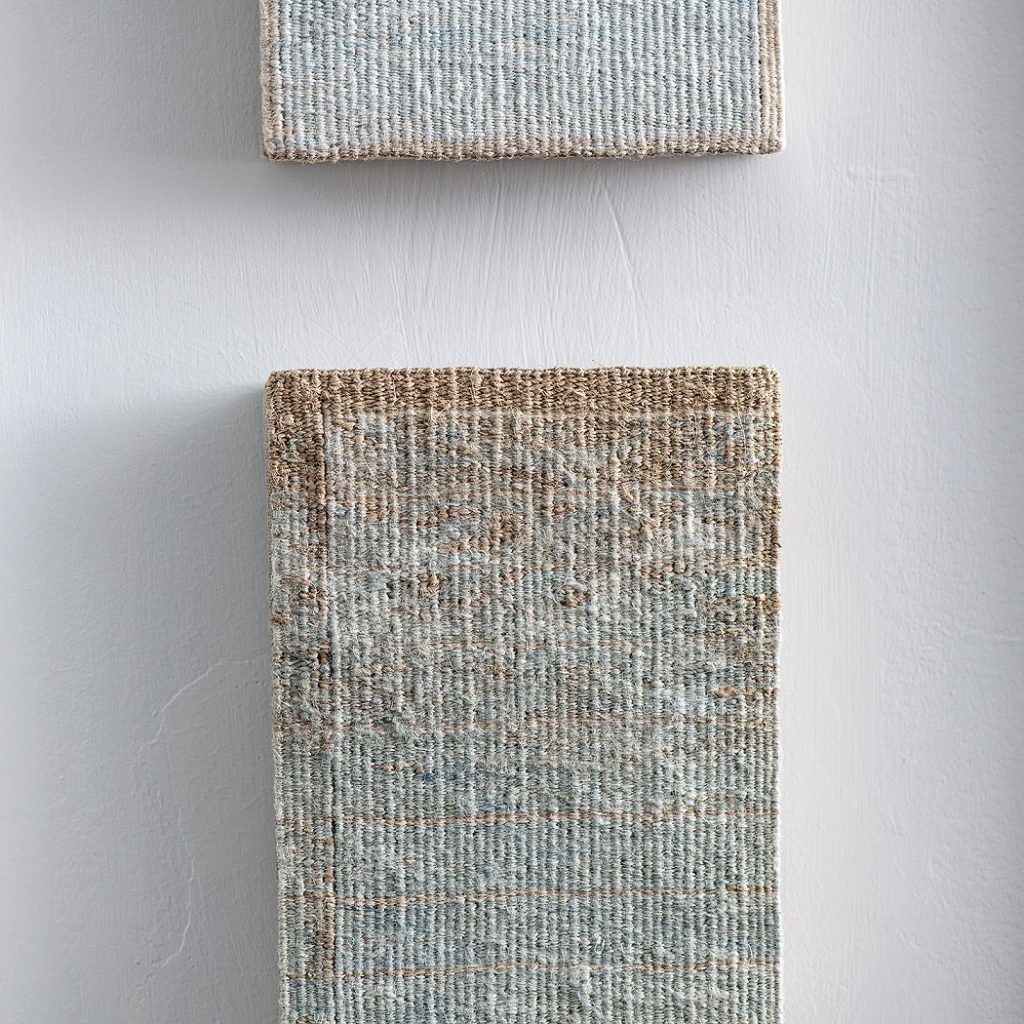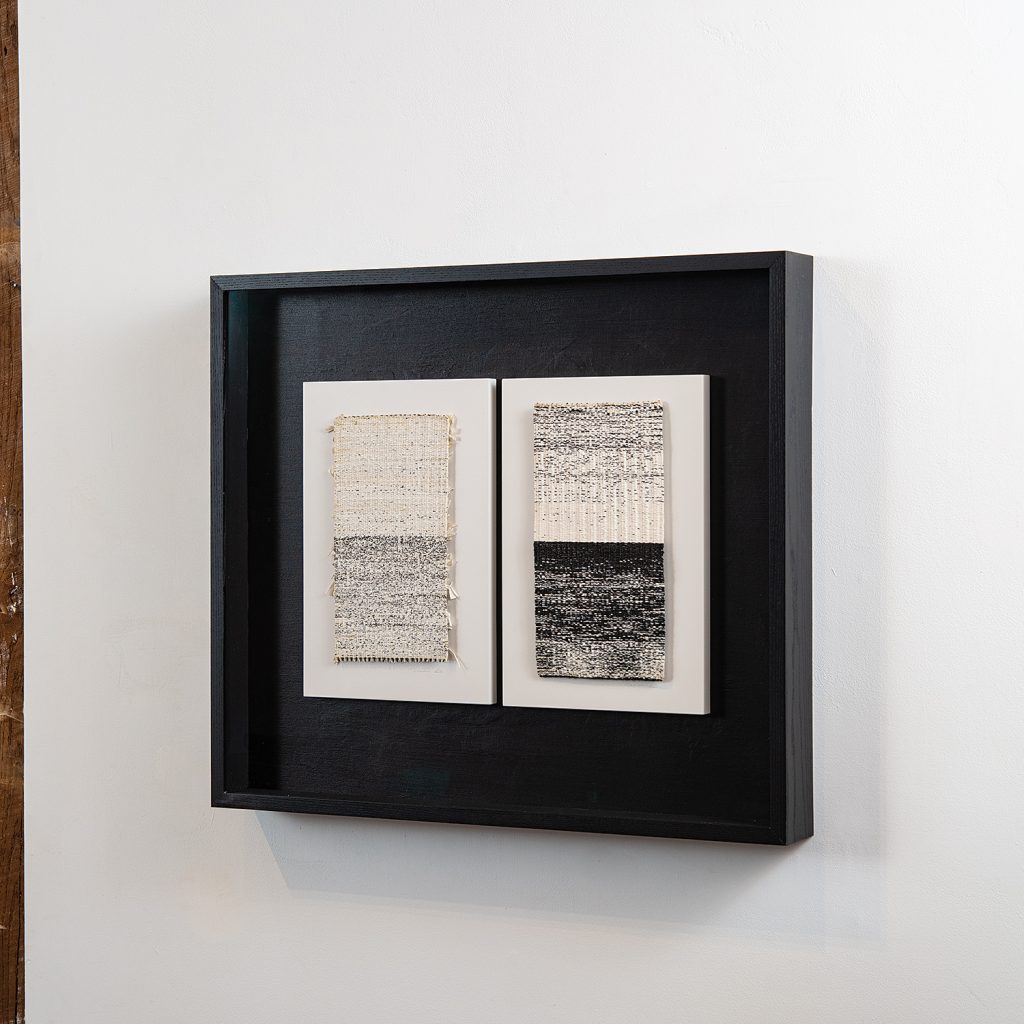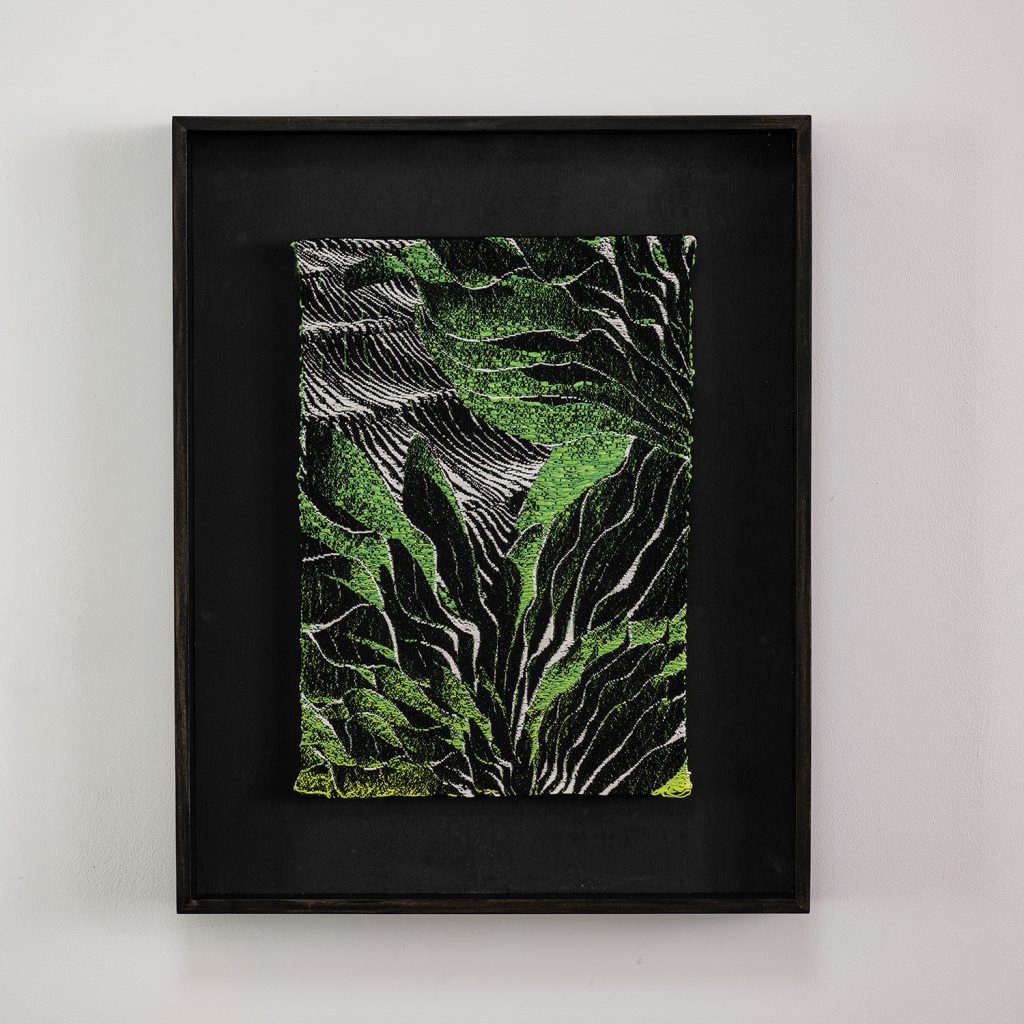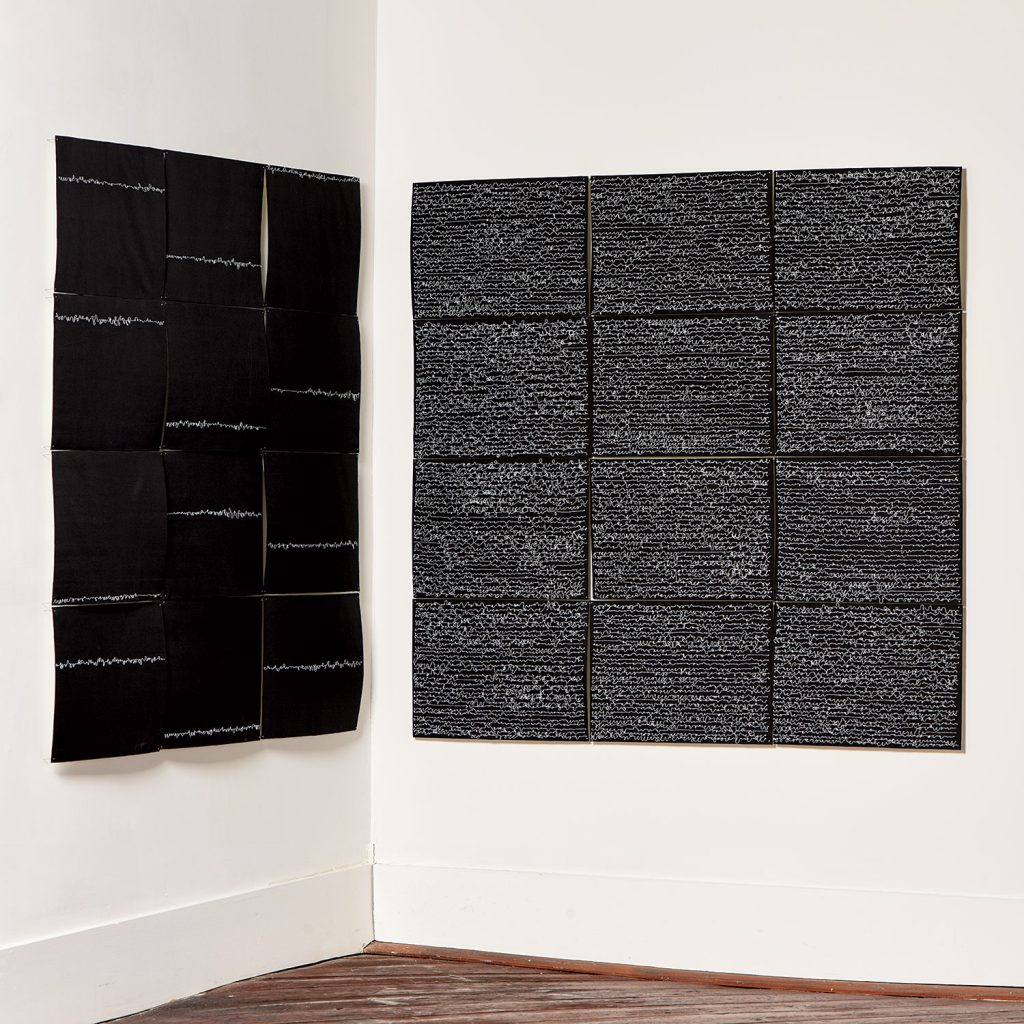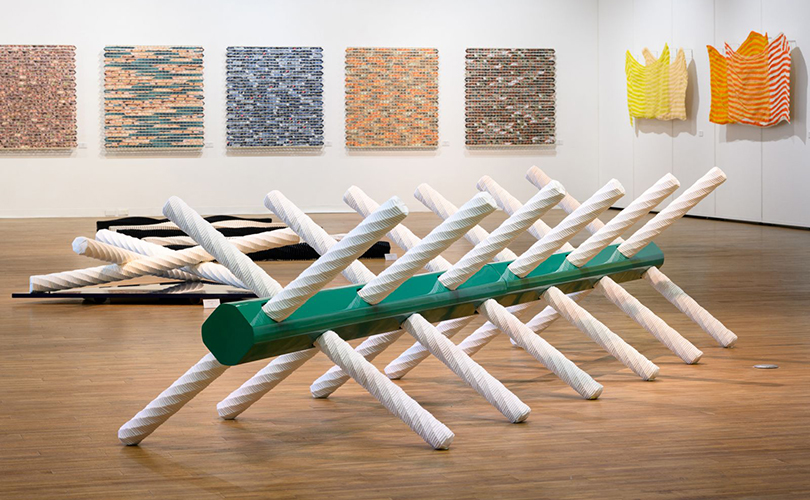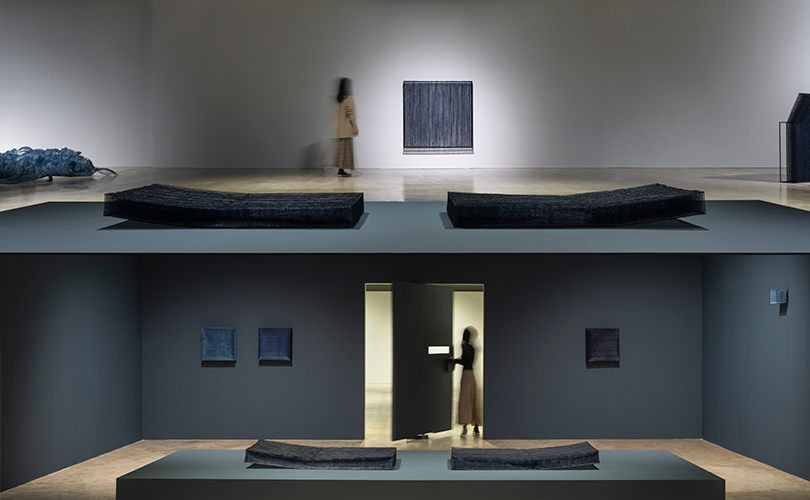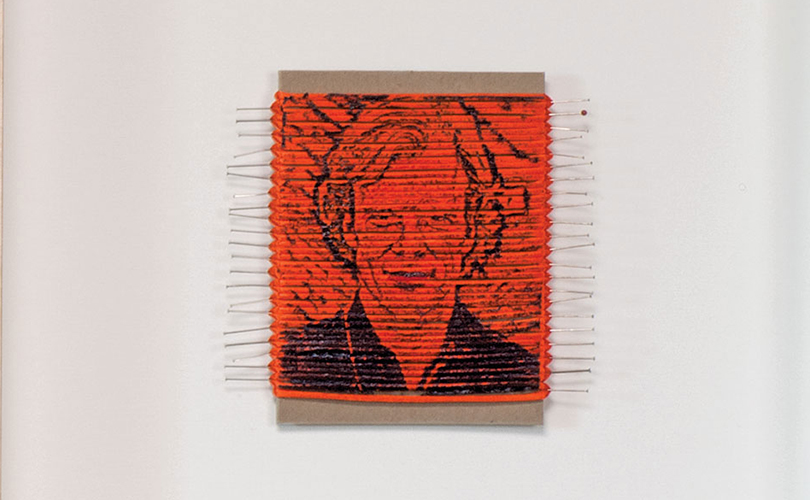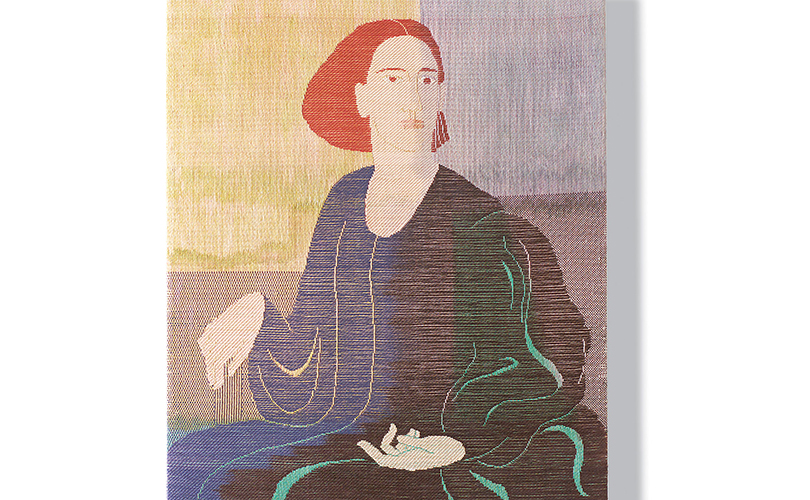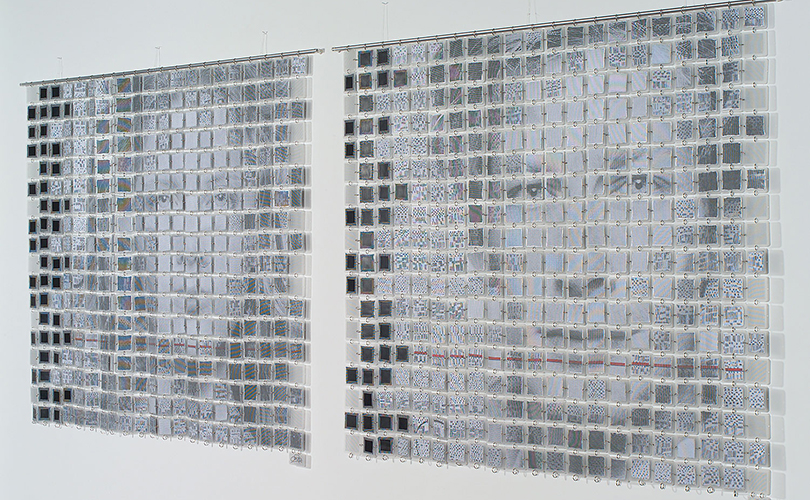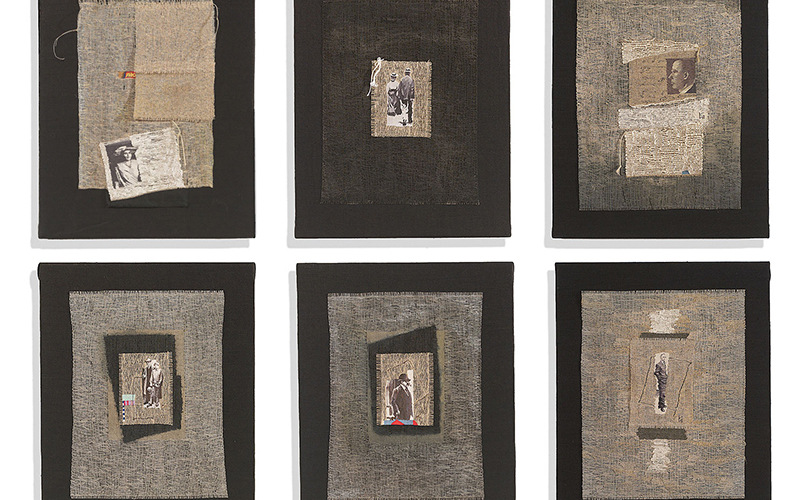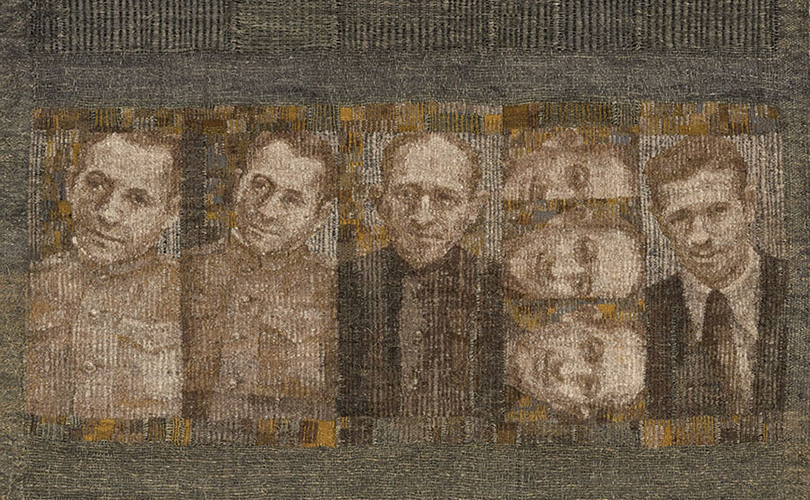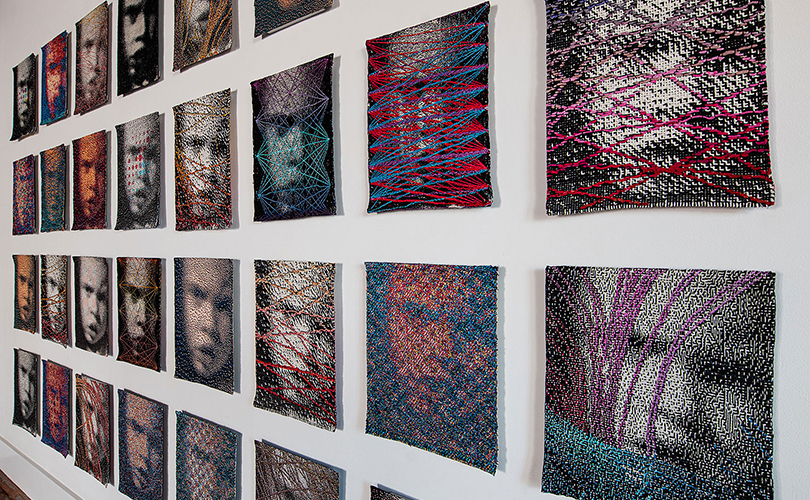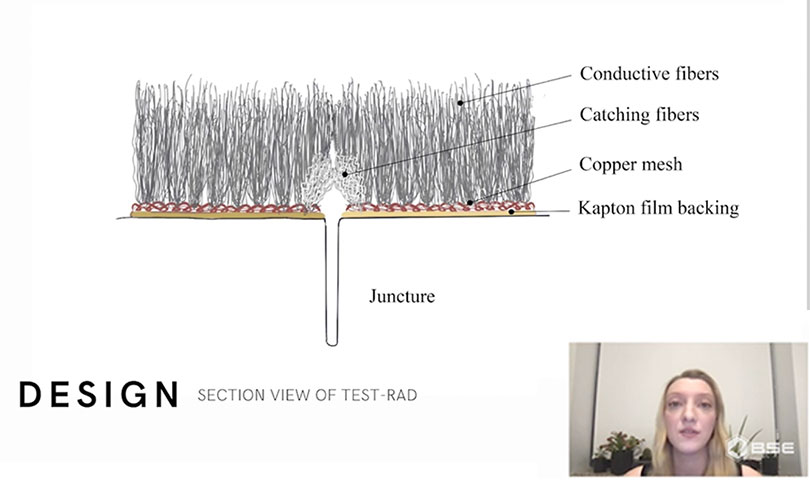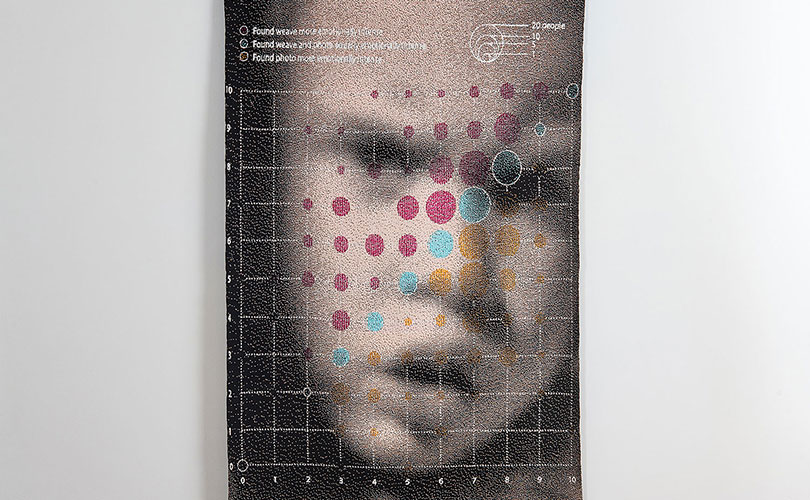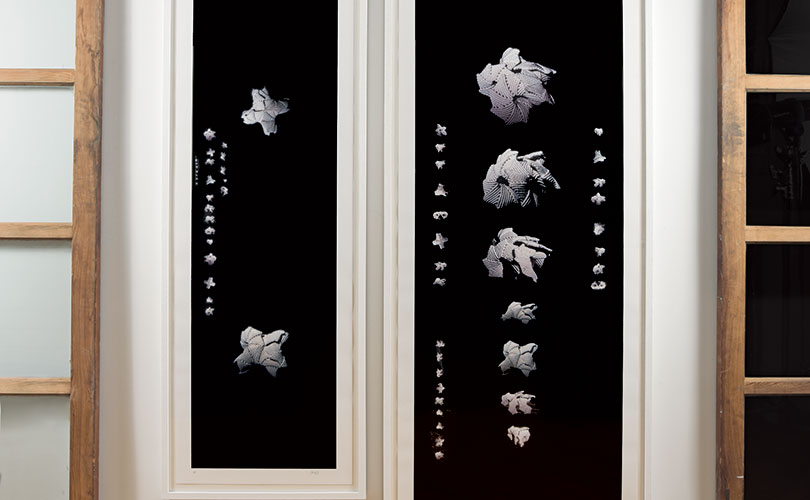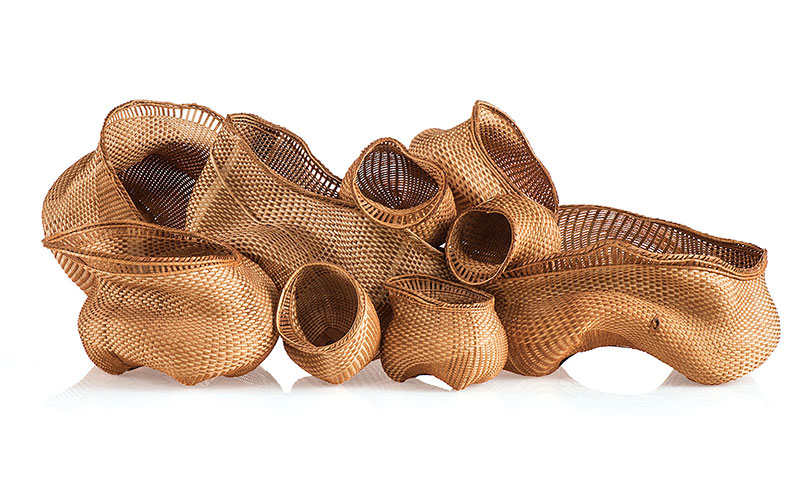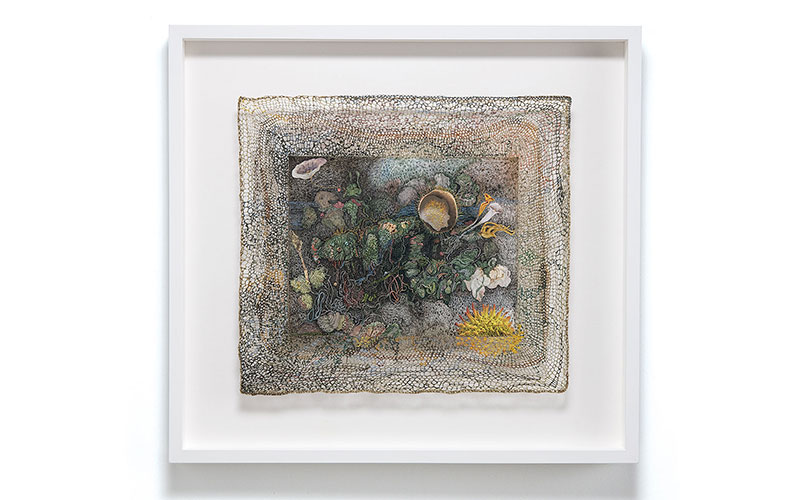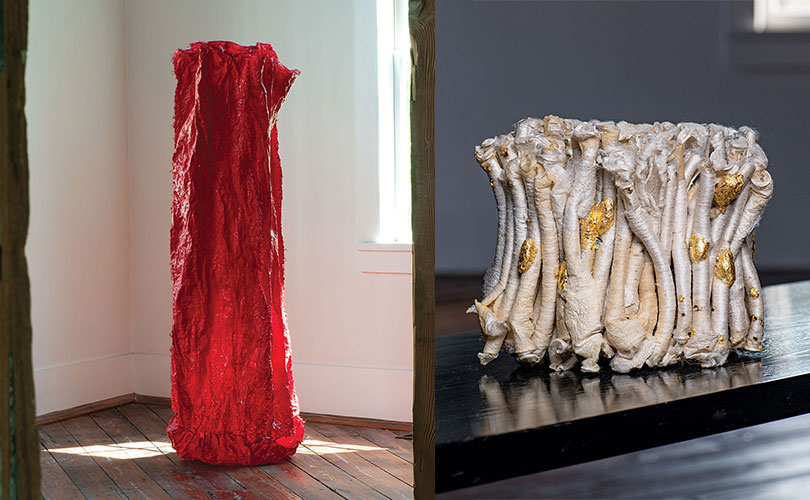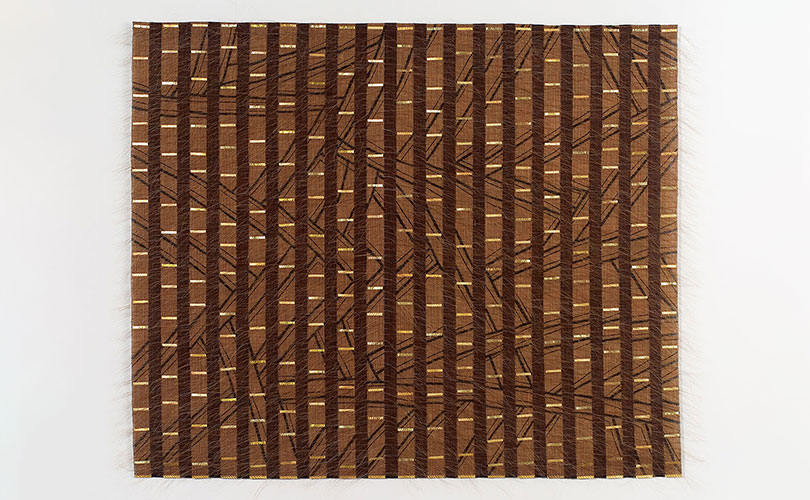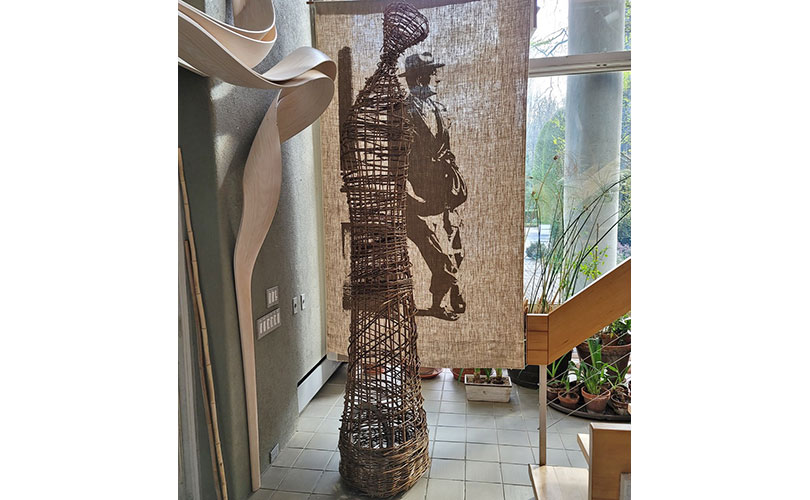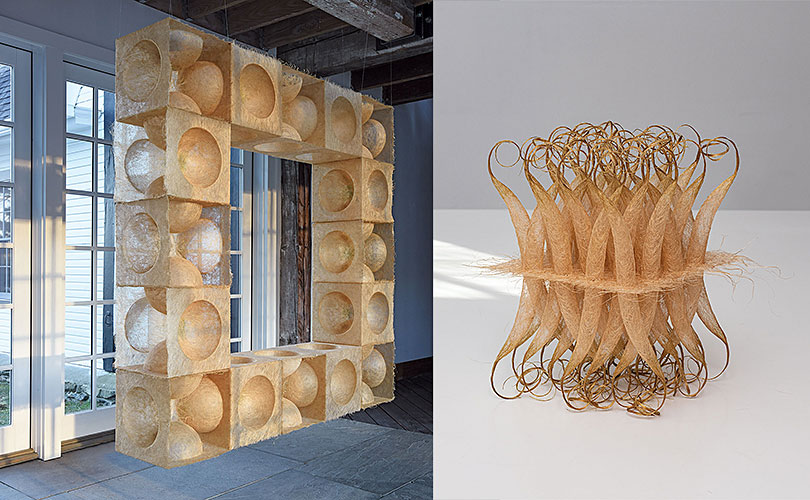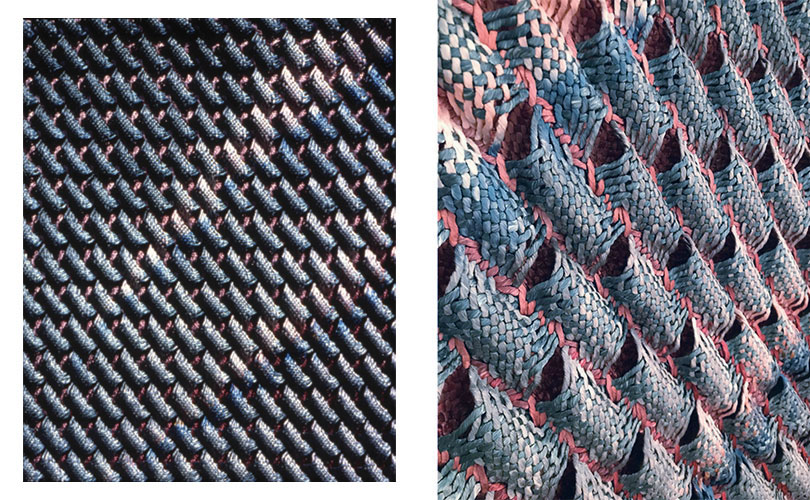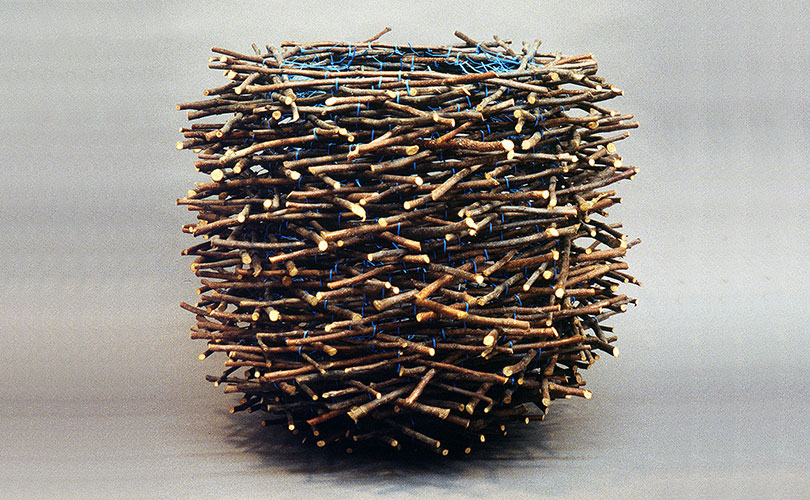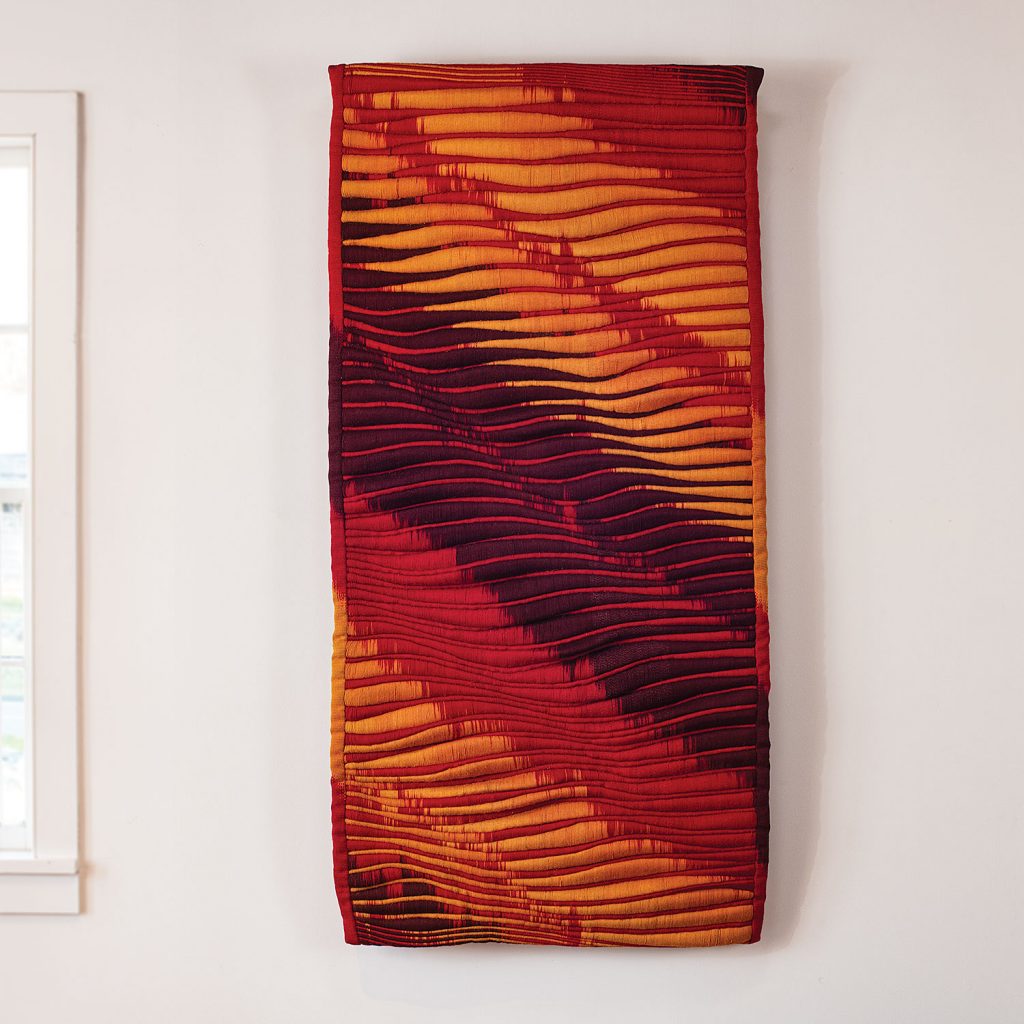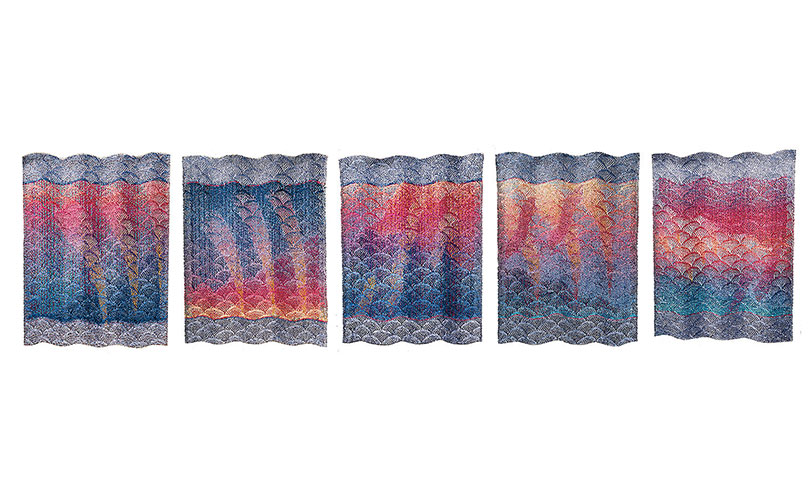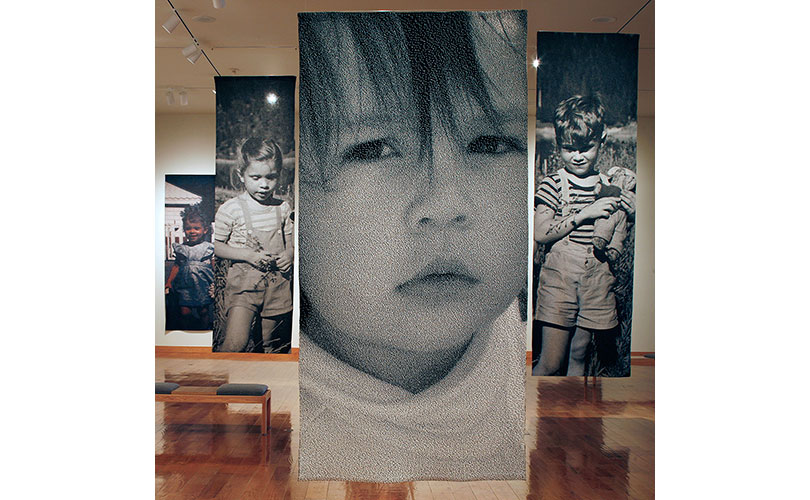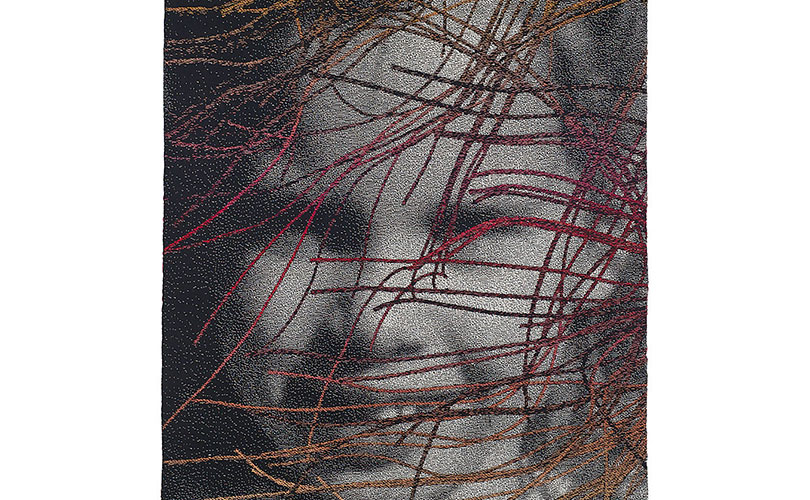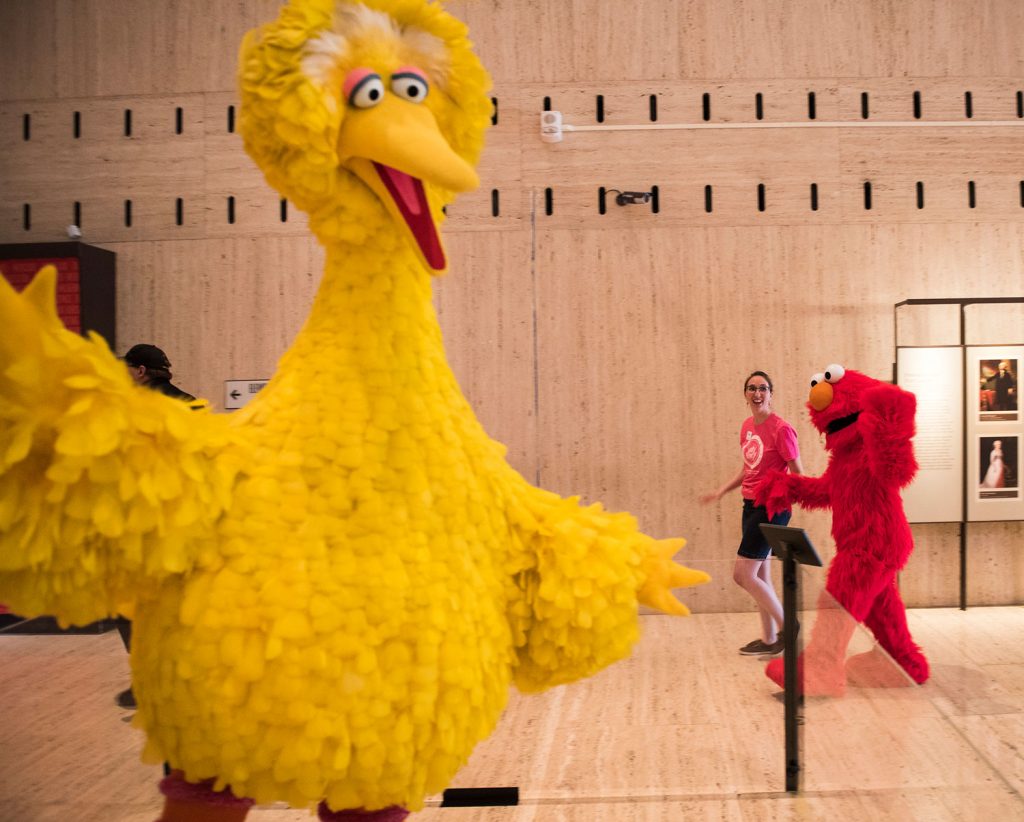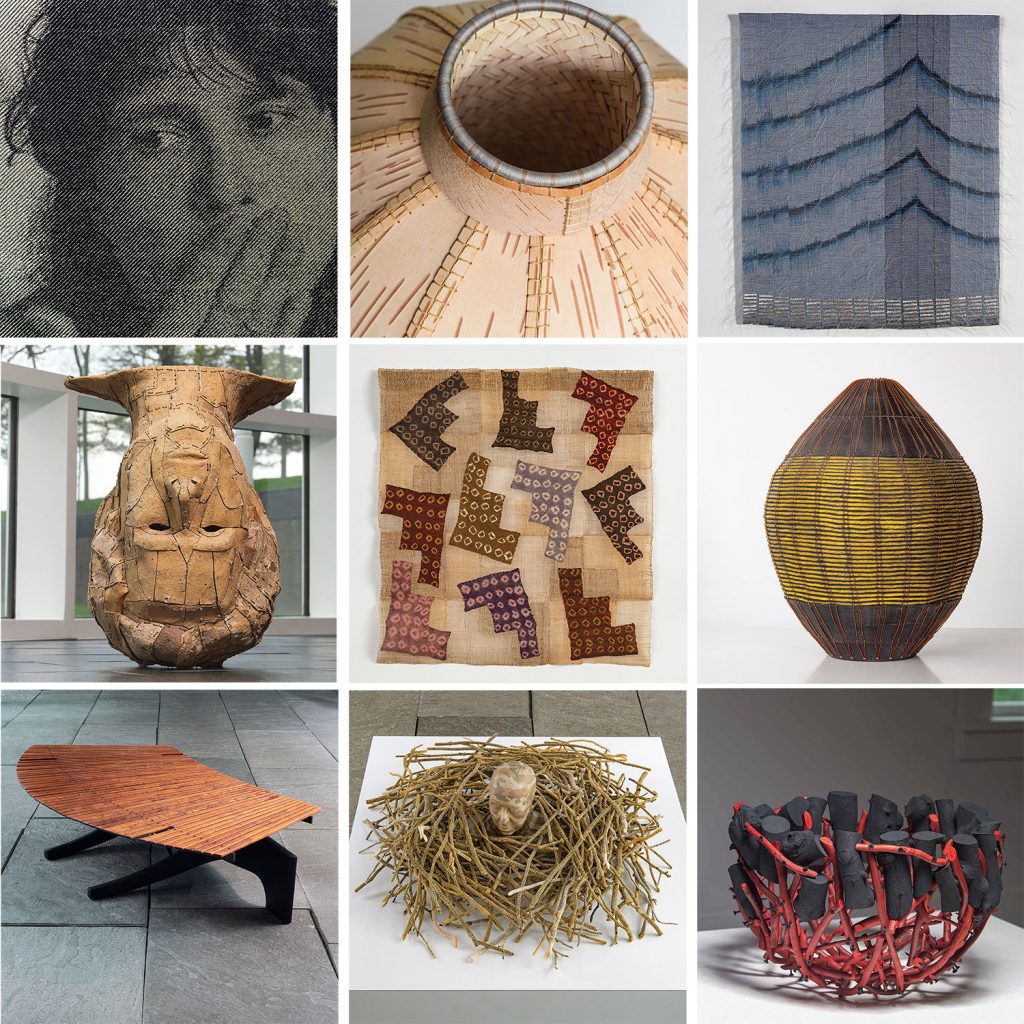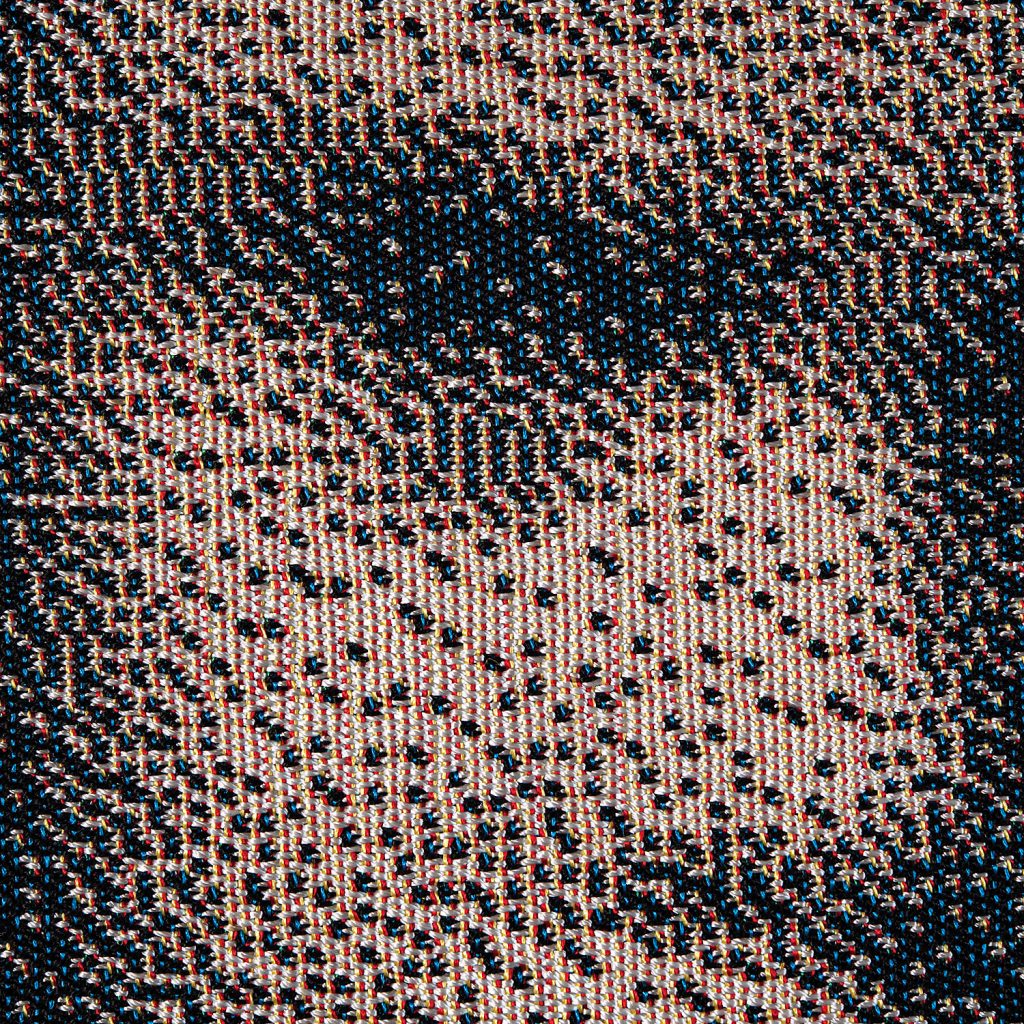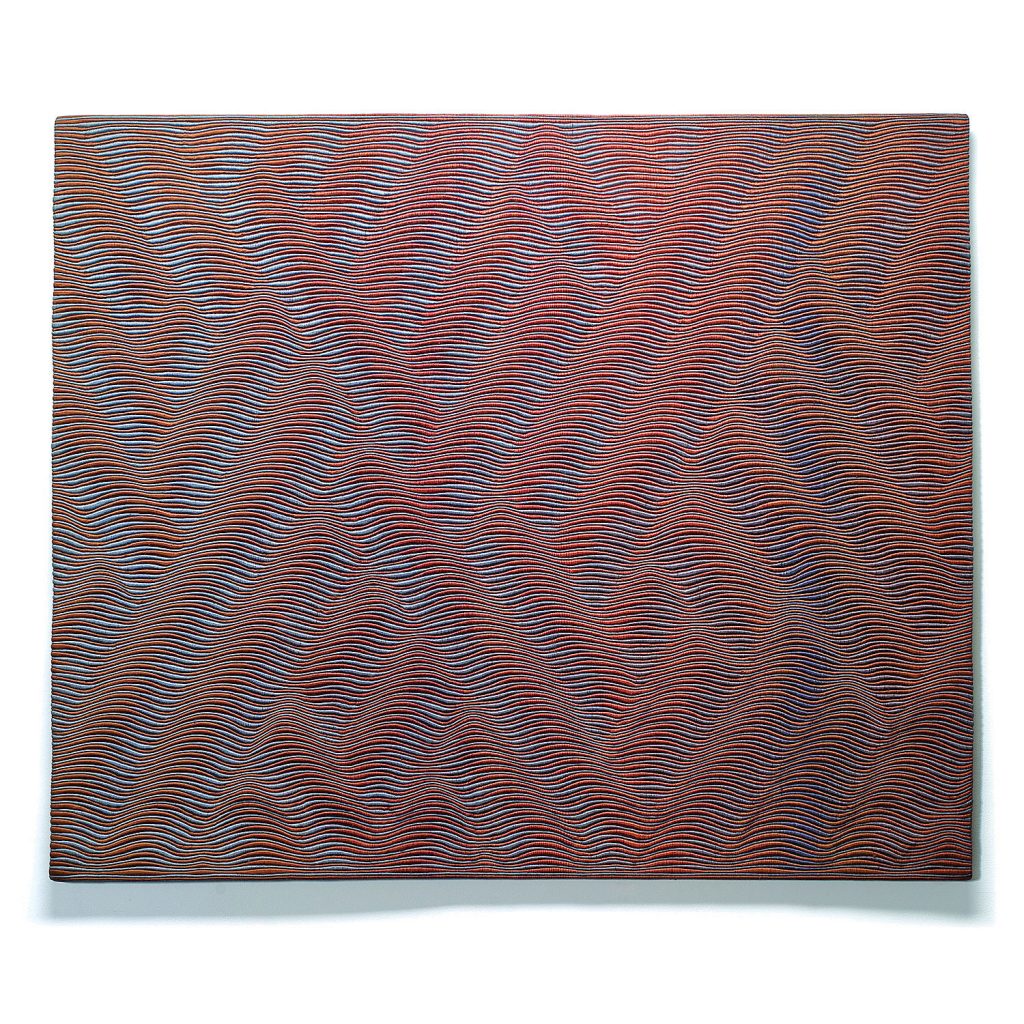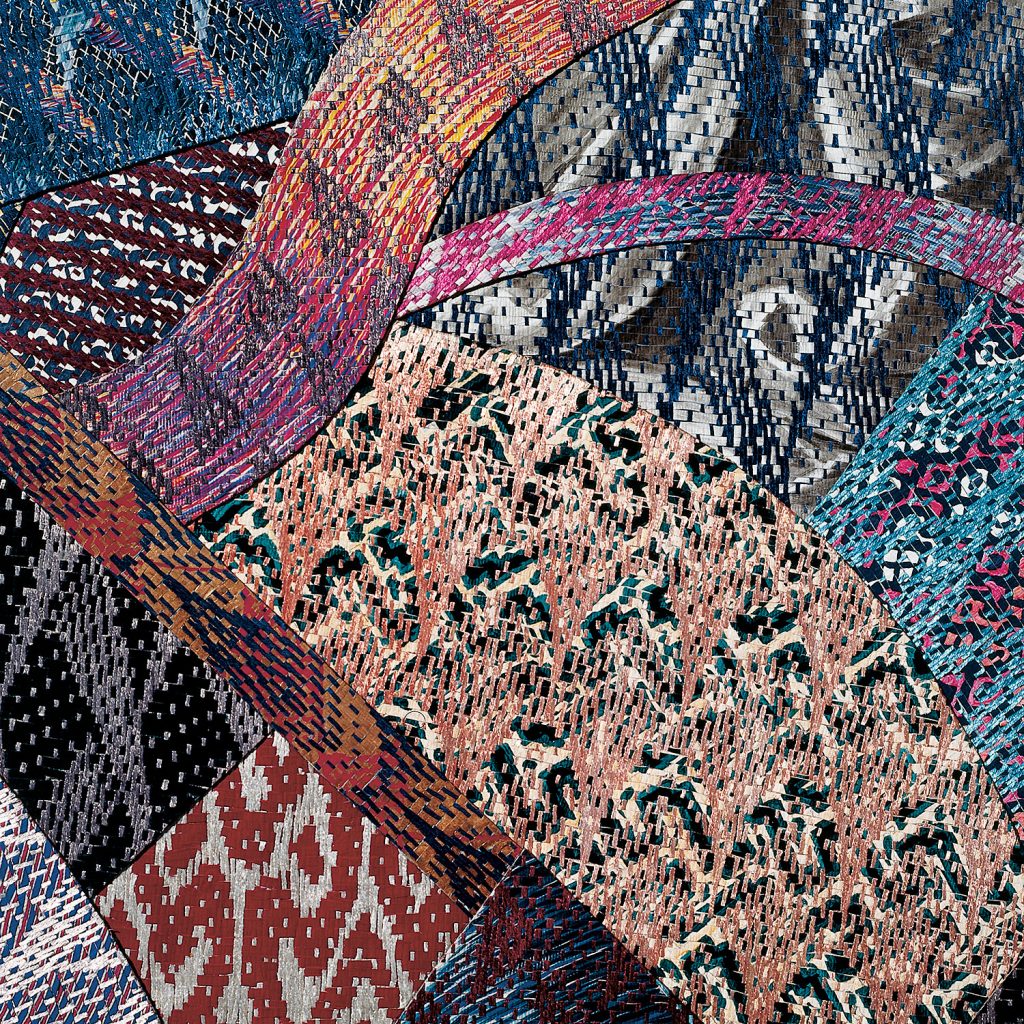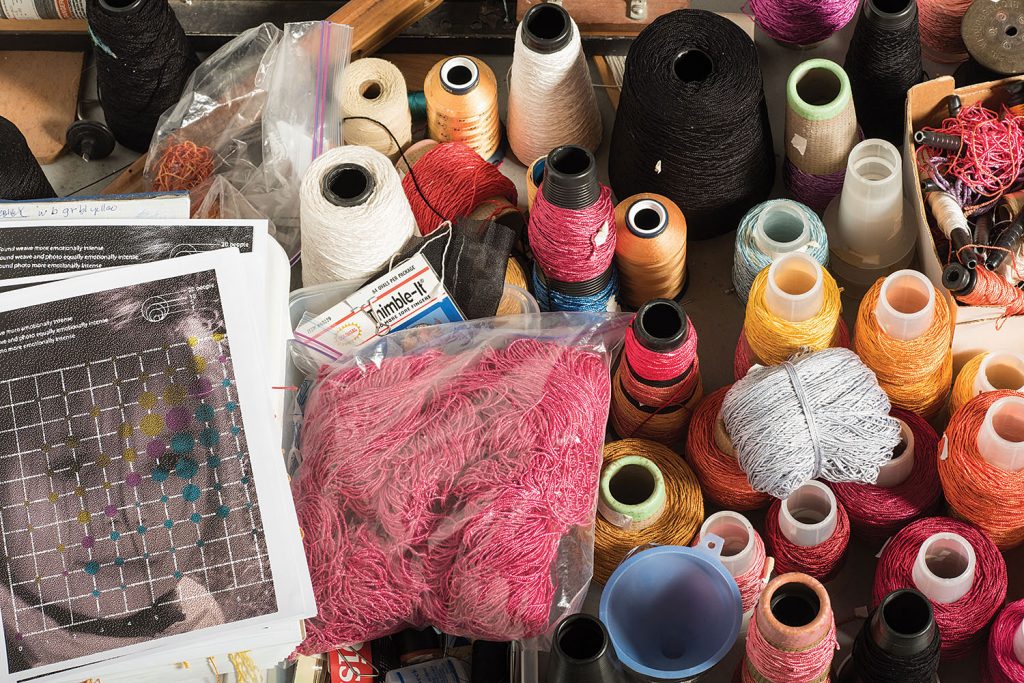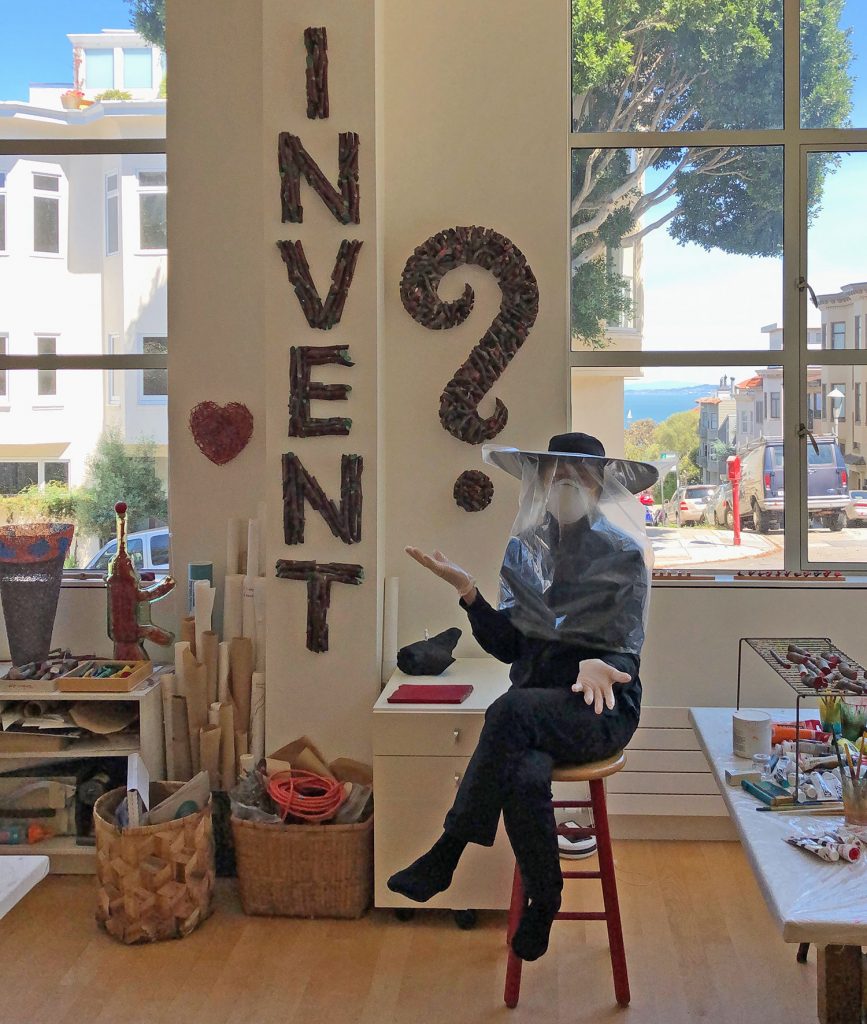We’ve spent the first weeks of 2024 summing up 2023 and looking at this year’s trends in art and design. Now we’ve got a more concrete prediction — our Spring Art in the Barn exhibition will run from Saturday, May 4 through Sunday, May 12, 2024. Discourse: art across generations and continents will explore the diversity in art textiles and fiber sculpture.
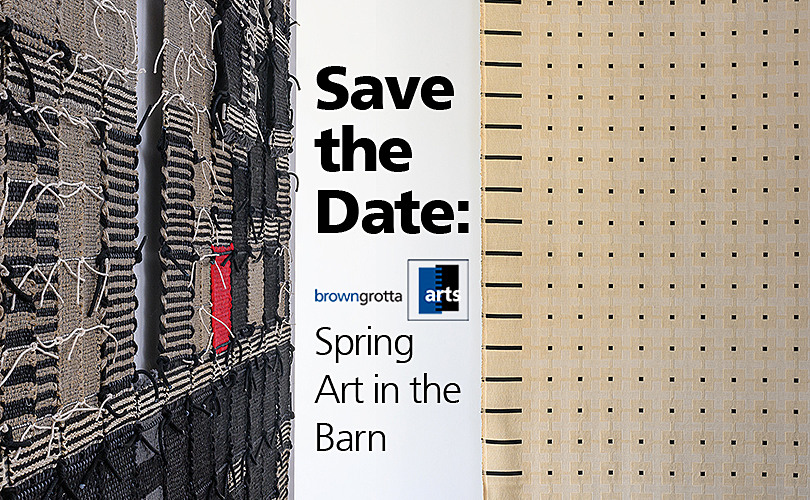
In Discourse, browngrotta arts will assemble a large and eclectic group of artworks that celebrate artists from different countries, who work with varied materials, and represent distinct artistic approaches. More than 50 artists from 20 countries will be featured.Included will be works from the art form’s origins 60 years ago, current mixed media works and sculpture, and pieces created in the decades between — enabling an intriguing look at intergenerational differences, material breakthroughs, and historical significance in fiber art.

structural explorations
Despite their distinctiveness, the artists in Discourse share a common trait. Each possesses “material intelligence,” what author Glenn Adamson describes as “a deep understanding of the material world around us, an ability to read that material environment, and the know-how required to give it new form.” The works in Discourse reflect this mastery. Artists like John McQueen and Norma Minkowitz of the US and Norie Hatekayama and Naoko Serino of Japan engineer imaginative structures of unexpected materials — plaited paper tape, molded jute, crocheted linen, and pieced twigs and branches.
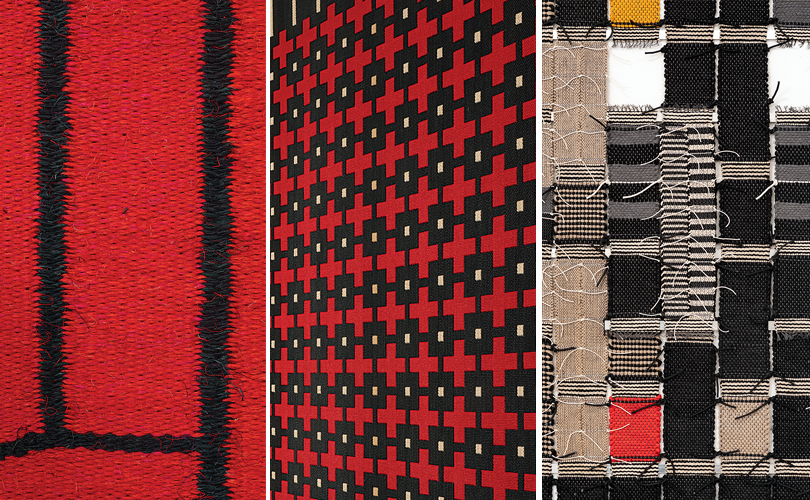
fiber art … an evolution
Discourse also offers viewers a chance to make intergenerational and cross-continental comparisons. Included will be starkly graphic weavings by Warren Seelig (US) made in the 70s and 80s, and ones by Gudrun Pagter (DK), and Blair Tate (US) made 40+ years later. We have often observed a different sensibility among artists from Eastern Europe and those in Western Europe, Asia, and the US. Artists in Eastern Europe have a history, which began after World War II, of using items at hand to create works – sisal, rope, hemp, goat hair. A fierce energy is seen in these works; they are rugged and raw. By contrast, for artists who worked elsewhere in more traditional tapestry materials like wool, silk, linen – quietly refined works were often the result. Discourse will spotlight such regional contrasts.

material matters
Viewers to Discourse will also see a wide range of to material and technique approaches. Several artists make vastly different uses of paper — scrolling of encyclopedia pages by Wendy Wahl (US), knotted paper objects by Shoko Fukuda (JP), and sculptural works of rice paper by Pat Campbell (US). Three other artists, Adela Akers (US), Marianne Kemp (NL), and Marian Bijlenga (NL), use horsehair in vastly different ways.
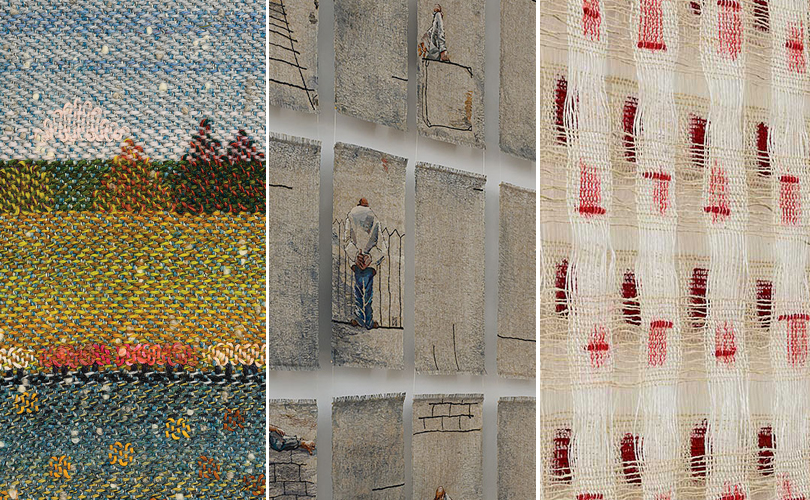
the medium is the message
Some of the artists in Discourse, including Laura Foster Nicholson (US) Gyöngy Laky (US), and Irina Kolesnikova (RU/DE), use the medium of fiber art to make explicit statements about the modern world — about personal anxiety, communication, and humans’ impact on the environment. “I like to tease the brain – to promote or even provoke or cajole, a visual dialogue with the viewer,” says Gyöngy Laky (US). Her work, Anticipation, which spells out the word “Who?“ in applewood branches, presents a question. “Given the challenges, concerns, conflicts and other dangers we face today,” Laky says, “this question, underlies the search for a way forward to a better day.” Anneke Klein (NL) is interested in communication: In Dialogue — Her work is made up of two layers that hang, one in front of the other. When you change your position in front of Dialogue, the interaction between the two layers changes, as it does between two speakers.

experiments in technique
Contemporary fiber art is by definition experimental. It arose when a group of artists used tapestry techniques to create abstract sculptures that hung off the wall. A work of parallel optical lines from studies Lia Cook (US) did for her master’s thesis in the 1970s will be included along with works reflecting Neha Puri Dhir’s (IN) currrent experiments dying silk and baskets by Esmé Hofman (NL) of black willow and elm that also incorporate color.
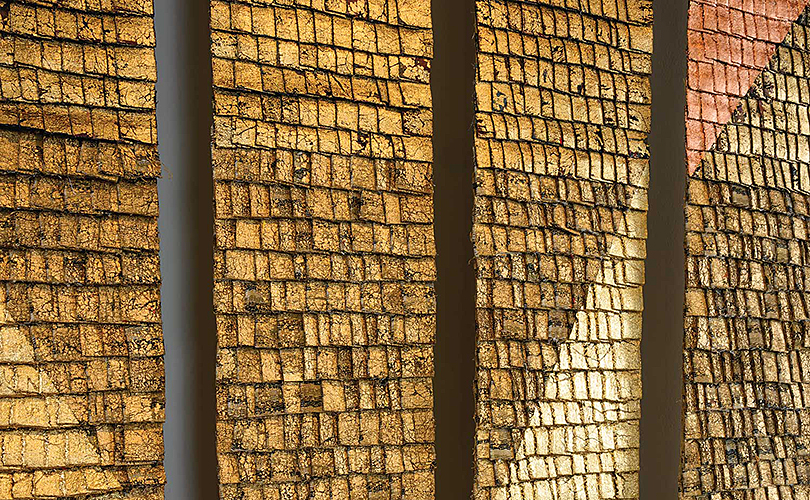
fiber art has emotional appeal
Fiber art — art textiles, tapestries, and three-dimensional sculpture — engages us on a deeply personal level. Our first memories are of cloth, fuzzy blankets, soft towels and they remain strong ones. Scientists have shown that different parts of the brain light up when we look at a woven image and a photographic image of the same item. Aby Mackie (SP) sources and recycles used fabrics from flea markets, fabrics laden with memory. She is captivated by these silent witnesses to a life lived; a worn bed sheet, a stained tablecloth, a moth-eaten gown. Such artifacts bear the marks and physicality of human nature, possessing a poetic power. She gilds this repurposed material in works like We Can All Be Saved, leaving viewers to consider what creates value.
We invite you to draw comparisons and gain new perspectives of your own. See you in May!
Exhibition Details:
Discourse: art across generations and continents
May 4 – May 12, 2024
browngrotta arts
276 Ridgefield Road, Wilton, CT 06897
Gallery Dates/Hours:
Saturday, May 4th: 11am to 6pm [Opening & Artist Reception]
Sunday, May 5th: 11am to 6pm (40 visitors/ hour)
Monday, May 6th through Saturday, May 11th: 10am to 5pm (40 visitors/ hour)
Sunday, May 12th: 11am to 6pm [Final Day] (40 visitors/ hour)
Schedule your visit at POSH
Safety protocols:
POSH reservations strongly encouraged • No narrow heels please
Catalog:
A full-color catalog, browngrotta arts’ 59th, Discourse: art across generations and continents, will be published by the gallery in conjunction with the exhibition.

